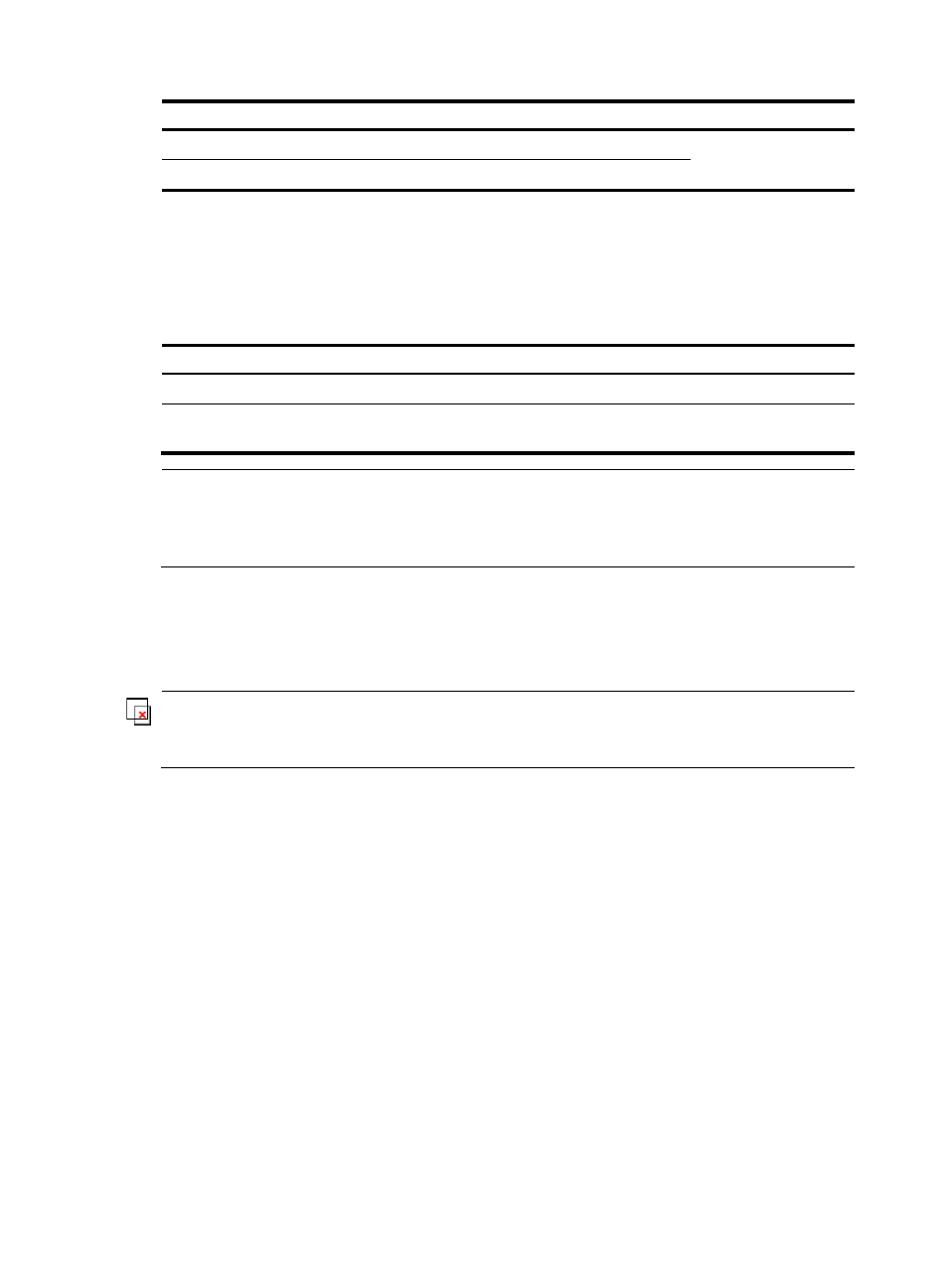Creating a dhcp address pool, Configuring static address allocation, Ation, see – H3C Technologies H3C S12500 Series Switches User Manual
Page 51: Configuring static, Address allocation

37
Task Remarks
Specifying a server's IP address for the DHCP client
Configuring self-defined DHCP options
Creating a DHCP address pool
When creating a DHCP address pool, specify it as a common address pool or an extended address pool
To create a DHCP address pool:
Step Command
Remarks
1.
Enter system view.
system-view
N/A
2.
Create a DHCP address pool
and enter its view.
dhcp server ip-pool pool-name
[ extended ]
By default, no DHCP address pool
is created.
NOTE:
A common address pool and an extended address pool are different in address allocation mode
configuration. Configurations of other parameters (such as the domain name suffix and DNS server
address) for them are the same.
Configuring address allocation mode for a common address
pool
IMPORTANT:
You can configure either a static binding or dynamic address allocation for a common address pool but
not both.
You need to specify a network segment for the dynamic address allocation. A static binding is a special
address pool containing only one IP address.
Configuring static address allocation
Some DHCP clients, such as a WWW server, need fixed IP addresses. To provide a fixed IP address, you
can create a static binding of a client's MAC address or ID to IP address in the DHCP address pool.
When the client with that MAC address or ID requests an IP address, the DHCP server assigns the IP
address from the binding to the client.
A DHCP address pool supports only one static binding, which can be a MAC-to-IP or client's ID-to-IP
binding.
Follow these guidelines when you configure static address allocation:
•
Use the static-bind ip-address command together with static-bind mac-address or static-bind
client-identifier command to accomplish a static binding configuration.
•
In a DHCP address pool, if you execute the static-bind mac-address command before the
static-bind client-identifier command, the latter will overwrite the former and vice versa.
